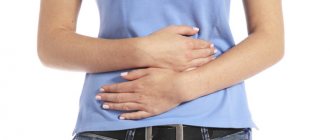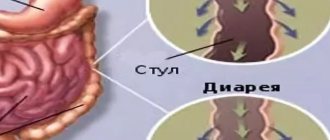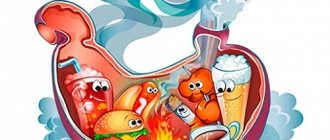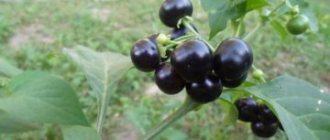Normal stool: what comes out and how is important • HEALTH BUTTON
Skip to content 03/13/2020
- >About the site
- >Authors
HEALTH BUTTON
what to do when you need to do something
Health
Author: Igor Ucharov02/04/201910/25/2019
Did you know that a goose defecates on average once every twelve minutes, while sloths only poop about once a week? "Going big" can be a rather uncomfortable topic for most of us, but it's actually interesting. And it’s good for your health to know how often you should poop.
The urge to stool and its character are quite diverse both in the animal and human worlds. But despite the universality of the act of defecation, this type of toileting is rarely discussed. And in vain.
Defecation: norm and deviations
On average, a healthy person has no more than three bowel movements per day. In this case, the total mass of adult feces ranges from 200 to 900 grams. This is a mixture consisting of approximately equal proportions of residual nutrients, waste digestive juices and microorganisms.
An increase in the volume and weight of feces occurs due to increased fluid consumption or in diseases associated with impaired digestion of food. Normally, according to the Bristol scale, stool should look like a soft, smooth sausage without lumps or inclusions and have an unpleasant but not foul odor. In other cases, we may be talking about deviations in the functioning of the digestive system. However, many people sometimes only dream about ideal bowel movements.
Feces are a multicomponent product of the vital activity of the intestines, digestive glands and microflora
Not just the form
In addition to shape, types of feces differ in color. Normally, feces should be light to dark brown in color. But if the condition of the human body is disturbed, it can be very light, red, yellow and even black. This may indicate that the person is sick. But there are food products, the consumption of which contributes to the coloring of stool in a certain color. Potatoes and rice make it light, beets, tomatoes, juices make it red, activated charcoal makes it black. But if you haven't eaten any foods or taken any medications that could affect the color of your stool, be sure to see your doctor, who will use the Bristol Stool Shape Scale to determine the quality of your stool.
Causes of mushy stools
Quick release of feces is not always the norm. Pasty feces, frequent urge to defecate, unformed stools - all this can be a symptom of a pathological condition. Such ease of emptying, repeated regularly day after day, is often fraught with danger.
What your stool can tell you: video
Frequent, mushy, sometimes profuse stools:
- a sign of digestive disorders due to an incorrectly selected diet;
- evidence of the presence of inflammatory processes in the intestines;
- possible disruption of the absorption of nutrients from food.
Pasty stools are classified as type six on the Bristol scale.
Excessive fluid intake can also be one of the reasons for the appearance of mushy stool. But there is another aspect of the occurrence of such a chair. This is insufficient absorption and absorption of fluid by the body, which leads to dehydration. It should be remembered that many diseases change the nature of stool. And it is softened, sometimes liquid stools that are evidence of such conditions. Unfortunately, there are many reasons:
- dysbiosis caused by allergies, infections, antibiotics, hormones, choleretic drugs, laxatives and/or vitamin deficiency;
- infectious diseases: bacterial, viral, parasitic;
Infection with dysentery amoeba can cause mushy stools - chronic inflammatory diseases of internal organs: liver, gall bladder, intestines, stomach, pancreas;
- incorrectly selected diet with a large amount of fiber;
- hormonal imbalances with loss of appetite;
- congenital insufficiency of digestive enzymes (food intolerance) for the breakdown of certain nutrients (lactose, gluten, casein);
- irritable bowel syndrome;
- tuberculosis;
- malabsorption (impaired absorption of nutrients in the intestines);
- Crohn's disease;
Crohn's disease is an autoimmune disease that can affect all parts of the gastrointestinal tract and cause mushy stools. - oncology of various parts of the intestine;
- acute poisoning of various etiologies and severity;
- increased peristalsis (motility) of the intestine;
- increased fermentation in the stomach and intestines;
- stressful situations with high adrenaline production;
- “travelers' diarrhea” associated with a sudden change in usual foods and drinking water.
Mushy-looking stools may be homogeneous or heterogeneous. Sometimes dense, sometimes hard particles of feces are released accompanied by thick mucus or foul-smelling liquid.
Density
Pasty stools can vary in nature:
- Foamy stool indicates the presence of fermentation processes in the body. It can appear with heavy consumption of beer and kvass;
- with a sharp decrease in the flow of bile into the intestines due to the presence of stones or inflammation of the pancreas, ointment-like loose feces may be observed;
- loose, porridge-like stools are present when food is digested in the small intestine for various reasons, as well as due to the accelerated passage of feces;
- liquefied stool like pea puree may be evidence of a dangerous disease such as typhoid fever;
- colorless stool with the consistency of rice water is a characteristic sign of cholera;
- the presence of clay inclusions or gray masses in the feces is observed when there is a difficult outflow of bile from the liver and gallbladder, which leads to impaired breakdown of fats;
- Watery stools may be evidence of heavy consumption of water or other liquids.
Color
In adults, the normal color of stool is considered to be from yellow-brown to dark chocolate, depending on the level of bilirubin (bile pigment) in it. In addition, stool may change color depending on the foods or medications consumed:
- orange color can be caused by eating large amounts of pumpkin, carrots, apricots, and citrus fruits;
- a reddish tint appears due to the consumption of beets and red currants;
- green feces appear after taking iron supplements, eating spinach, lettuce, sorrel, and fresh peas;
- black color occurs after consuming activated carbon, bismuth preparations, as well as large volumes of black currants, blueberries, and chokeberries.
In other cases, mushy stool of other abnormal colors is evidence of pathology:
- pale brown indicates increased intestinal motility and possible putrefactive processes;
- light yellow and grayish-white colors are characteristic of inflammation of the liver, gall bladder, blockage of the bile duct;
- a bright yellow color may confirm the presence of rotavirus inflammation of the small intestine;
- tarry, black and black-brown feces are characteristic of inflammation of the colon, peptic ulcer, colon cancer, nosebleeds and pulmonary bleeding when swallowing blood, inflammation of the walls of the stomach;
Black stool may indicate bleeding from a stomach ulcer - Bleeding from the lower intestine (hemorrhoids, ulcerative colitis, anal fissures) can give the stool a reddish tint;
- green color indicates increased intestinal motility, dysbacteriosis, poisoning, dysentery, intoxication after taking antibiotics.
Changes in the color of feces in each specific case should be assessed strictly individually, taking into account the patient’s age, state of health, diet and lifestyle, as well as the presence of other symptoms. If there is a sudden change in a person’s general well-being, you should not postpone your visit to the doctor.
Chair - health indicator - video
Smell
You should not only visually evaluate the type of feces. Depending on the presence of various diseases, the quality of the products consumed, and the severity of the digestion processes, feces have a certain smell:
- foul-smelling feces are direct evidence of impaired functioning of the pancreas, decreased bile flow, and proliferation of microbes;
- a putrid smell indicates disturbances in the functioning of the stomach and intestines, putrefactive processes, excessive consumption of protein foods;
- the sour smell of feces is characteristic of heavy consumption of sugar-containing foods, yeast drinks and baked goods;
- the tint of rancid oil odor is characteristic of the presence of bacterial decomposition of fats in the intestines;
Bile is the main factor in the breakdown of fats in the intestines. - an almost complete absence of odor may indicate accelerated evacuation of contents from the small intestine.
Additional factors
Mushy feces may have additional characteristics:
- Regular, prolonged morning appearance, accompanied by profuse flatulence and the presence of pathological inclusions, may indicate serious digestive disorders. If the relaxation is sporadic and appears infrequently, then we are talking about poor nutrition or the use of drugs that have a laxative effect;
- Frequent bowel movements are evidence of the presence of various ailments. All sorts of factors can provoke such a situation: failure to comply with hygiene rules, infection with an intestinal infection, exacerbation of chronic diseases of the digestive system. In parallel with an increased urge to defecate, pain, cramps, nausea, fever, vomiting, and bloody or purulent discharge may be present. All this requires mandatory examination under the supervision of a specialist;
Rotavirus is the most common cause of mushy stools - the presence of mucus during the release of mushy feces is a sign of internal changes in the functioning of the digestive system. A similar symptom can appear when eating food (large amounts of fermented milk products, slimy porridges, berries). Sometimes mucus in the stool is detected due to the penetration of a bacterial infection into the intestines (the dysentery bacterium Shigella).
If such symptoms occur, it is necessary to urgently consult a doctor to identify the true cause and treat it.
Gas formation
The release of gases when emptying the rectum is normal. This is the result of the vital activity of various microorganisms that inhabit the human intestine. The volume of gases directly depends on the amount of undigested food entering the large intestine.
Normally, an increase in gases may occur against the background of:
- heavy consumption of sweets and baked goods;
- abundant consumption of foods containing fiber;
- eating large amounts of food that stimulates fermentation processes: bread, kvass, beer;
- swallowing large amounts of air while eating;
- consumption of carbonated drinks.
Causes of mushy stool - video
Sheep feces in humans: associated symptoms
Due to impaired intestinal motility, the contents become compacted, which, when attempting to defecate, leads to the separation of feces into separate small lumps. Such modified stools often contain an excessively large number of red blood cells and are poorly digested particles of starch and fiber mixed with mucus.
If this situation persists for quite a long time, then, along with the discharge of sheep feces, a person may experience:
- Headaches and dizziness;
- General deterioration in health;
- Increased nervousness and irritability;
- Increase in the number of age spots and wrinkles;
- The appearance of bad odor from the mouth and from the whole body;
- Bloating;
- Increased blood pressure when trying to defecate (especially in older people).
Such symptoms of sheep feces are the result of chronic intoxication of the body, which develops as a result of intestinal slagging. The feces remaining in it gradually begin to rot, releasing a large amount of toxins, which are then absorbed into the intestinal walls and poison the entire body.
When a person with sheep feces continues to eat his usual food without changing his diet, his internal organs (kidneys, liver, lungs) are forced to work more intensively to cope with the load. As a result, immunity often decreases and the risk of developing other diseases (both infectious, cardiovascular or hormonal) increases.
If left untreated, sheep feces can cause:
- The appearance of cracks in the anus, as well as on the intestinal walls;
- Rectal prolapse (or rectal prolapse);
- Hemorrhoids;
- Formation of cancer cells.
Diagnostic methods
Absolutely all stool indicators can tell about the presence of diseases, diet, presence of problems, and use of medications.
Feces help to make a diagnosis when other results of studies and analyzes are not able to do so. When diagnosing diseases, it is very important to promptly identify the nature of mushy stools. The main signs that allow us to judge the presence of infection are:
- increased body temperature;
- the presence of impurities in feces;
- severe dehydration of the body;
- mass occurrence of the disease.
There is a special science called scatology, which studies feces. It is examined under a microscope, the amount of fat, leukocytes, mucus, red blood cells, and fibers is determined. All this helps to identify pathology, the presence of infection, parasites, and neoplasms. A standard coprogram involves searching for and determining the presence of blood, bilirubin and stercobilin. During a microscopic laboratory examination of feces, parasites, pathological inclusions, blood cells, microbes, and connective tissue fibers are identified.
Feces contain many components that can shed light on the cause of the disease
During the study, the acid-base balance is determined:
- high acidity is due to the presence of fermentation processes;
- an alkaline environment occurs only with intense decay and lack of digestion of food.
In the process of searching for the cause of mushy stool, the following diagnostic measures are carried out:
- detection of hidden blood in feces;
- identification of worms and their eggs;
- identification of protozoa;
- establishing presence in feces:
- typhoid paratyphoid microorganisms;
- Giardia cysts;
- Pseudomonas aeruginosa;
- causative agent of tuberculosis;
- coli;
- cholera vibrio;
- cocci of various types;
Stool acquires a dark color due to the presence of the pigment stercobilin, a successor to destroyed hemoglobin in red blood cells.
The most common type of diagnosis is stool culture for dysbacteriosis. This study allows us to detect in the patient’s body not only the presence of pathogenic and opportunistic microbes, but also a possible deficiency of lacto- and bifidobacteria, which are necessary for normal life. To detect toxic substances, the method of gas-liquid chromatography of feces is used. It is based on the separation of biological material into parts followed by analysis of all components.
To find out the true reasons for the appearance of regular, long-lasting mushy stools, various studies of the abdominal organs are carried out: radiographic, ultrasound, tomographic.
When exactly should you see a doctor?
Yellow feces do not always immediately bother an adult, but this is until other symptoms of the pathology appear. And then it becomes impossible not to react to a strange sign.
You should definitely visit a doctor if:
- Abdominal pain of any nature appeared.
- The abdomen is abnormally soft or hard.
- Yellow feces are pinkish in some places, that is, they contain blood.
- There is a light state of feces and at the same time dark urine.
- The feces are loose, sandy, and eventually cease to be formed at all.
- Nausea appears, sometimes even to the point of vomiting.
- Vomiting appeared like a fountain, especially richly yellow in color.
- Diarrhea or constipation alternate.
- The temperature began to rise, slightly, but did not fall for a long time.
- Weakness occurs.
- No desire to eat food.
Lack of fluid in the diet is one of the main causes of constipation. To get rid of it in 3 days, you need to drink a simple remedy every day.
Seeing a doctor with such symptoms is simply a mandatory step, otherwise you can bring the disease to its peak and your health condition to critical. An experienced specialist will help you understand the reasons for the appearance of yellow stool in an adult and tell you what to do in each specific case.
Treatment
After conducting the necessary examination and identifying the causes of the disease, the doctor will prescribe adequate treatment. Typically, therapy is complex and consists of several components.
Drug therapy
The following medications will help normalize the functioning of the gastrointestinal tract, improve their functionality and restore the thickness of stool.
Pharmacological agents used to eliminate mushy stools - table
| Pharmacological group | Enterosorbents | Prebiotics | Antisecretory | Drugs to normalize peristalsis | Carminative | Antispasmodics | Antidepressants | Biologically active additives |
| Examples of drugs |
|
|
|
|
|
|
|
|
If the cause of mushy stool is a serious illness, the doctor will prescribe medications to treat the corresponding condition. It is possible that antibiotics, pancreatic enzymes, sedatives and antifungals, and corticosteroids will be needed. In severe cases, hospitalization is necessary.
Drugs used to eliminate mushy stools - photo gallery
Bruskopan will relieve pain
Colofort reduces gas formation in the intestines
Trimedat slows down peristalsis
Linex will quickly restore intestinal microflora
Omez helps restore the gastric mucosa
Fevarin is often used in the treatment of depressive disorders.
Enterosorbents Polyphepan and Polysorb will help normalize stool
Traditional medicine recipes
There are a large number of traditional medicine recipes to alleviate the condition of a patient suffering from frequent bowel movements and pasty stools. The most popular recommendations are:
- Infusion of oak bark. Pour 1 tablespoon of plant material into a glass of boiling water. Leave for 1 hour, then filter. The resulting drink is taken 1–2 tablespoons 3–5 times a day.
- Rice water. A thick broth is prepared from rice grains (preferably crushed) without adding salt, oil or seasonings. The resulting product is taken throughout the day, ¼ cup every 3-4 hours.
- Dried blueberry decoction. One tablespoon of raw material is poured into a glass of hot boiled water, brought to a boil, and boiled for 5 minutes. The resulting drink is filtered and cooled. Take instead of tea several times a day.
- Chamomile tea. For one glass of water, take 1 tablespoon of plant material. The mixture is boiled for 10 minutes, cooled, and filtered. The resulting decoction is drunk as tea before meals 2–4 times a day.
- Decoction of pomegranate peel. The dried peel of the fruit is crushed. Pour 1 teaspoon of raw material into one liter of boiling water and cook in a water bath for 30–40 minutes. Cool, filter and consume 2 teaspoons 3–5 times throughout the day.
To consolidate the effect of the medications used, you can additionally use herbal teas based on medicinal herbs and plants:
- lemon balm;
- St. John's wort;
- mint;
- chamomile;
- bird cherry;
- carrot seeds;
- dill;
- fennel;
- ginger
Folk remedies for eliminating mushy stools - photo gallery
Products based on oak bark have a pronounced antimicrobial effect
Chamomile has disinfectant properties
Blueberries contain vitamin C and other beneficial substances
Pomegranate peel contains many useful substances
Diet
If mushy stool appears, the following foods should be excluded from the diet:
- milk;
- fructose and sugar substitutes;
- legumes;
- carbonated drinks;
- fresh vegetables and fruits;
- herbs and spices;
- coffee;
- fatty foods;
- alcohol;
- baked goods;
- fresh bread;
- mushrooms;
- juices;
- canned food;
- smoked meats.
Foods that need to be excluded from the diet - photo gallery
Eating foods made from legumes can lead to increased gas formation.
Carbonated drinks can cause flatulence
Alcoholic drinks have a negative effect on the liver
Butter confectionery products contain a lot of sugar and yeast
Smoked foods increase the secretion of digestive juices
The following products must be present in the diet:
- stale bread;
- crackers;
- boiled eggs;
- lean meats and fish;
- steamed and boiled dishes;
- compotes and jelly;
- bananas;
- quince;
- persimmon;
- cottage cheese;
- baked apples;
- pureed or slimy porridges;
- cream soup;
- lean broths;
- fresh carrots.
Products recommended for consumption - photo gallery
Rusks are healthier than baked goods
Kissel envelops the mucous membrane of the stomach and intestines
Persimmon contains vitamins and fiber
Porridge is a product that is extremely beneficial for the intestines
A hard-boiled egg is good to include in your first meal of the day.
After long-term use of the diet, you should gradually switch to eating foods that were temporarily excluded from the diet. Fresh vegetables, fruits, berries and natural juices must be included in the menu with caution, in small portions.
Preventive actions
In order to prevent the appearance of softened, mushy stools, certain measures must be taken:
- drink only boiled or purified water;
- observe the rules of personal hygiene;
- prepare food in accordance with sanitary standards and regulations.
An additional incentive for recovery will be giving up bad habits and leading a healthy lifestyle. Drinking plenty of fluids (at least 2 liters), eating small meals, and walking in the fresh air will help cope with problems. Yoga, swimming, race walking, and meditation will help relieve tension and get rid of the influence of negative environmental factors.
Race walking is an excellent method of preventing loose stools.











